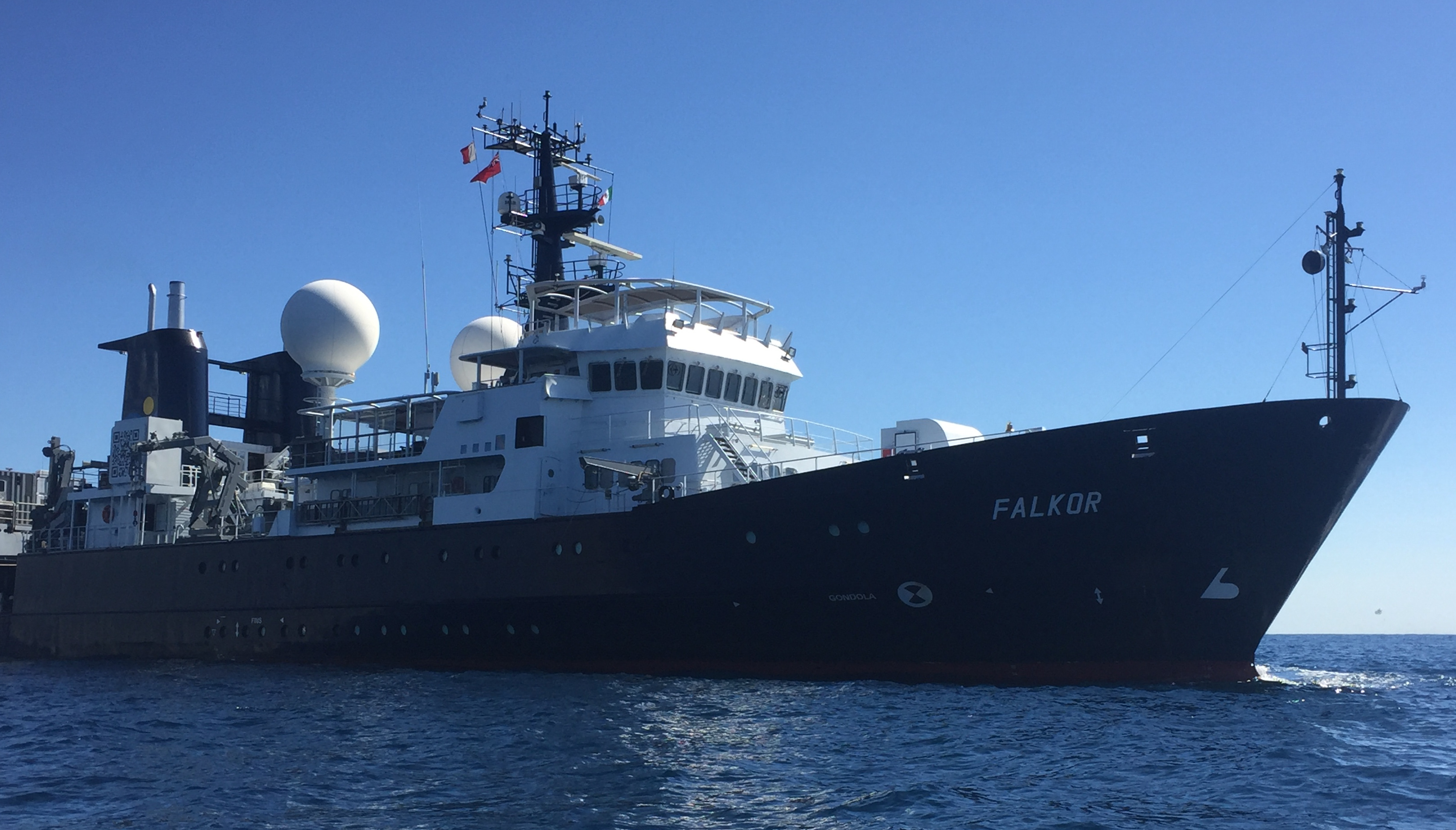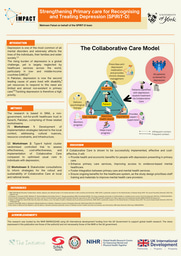Tentacular team up: Deep partnerships between sea anemones and bacteria
Published in Ecology & Evolution


The vast blue surface of the ocean… as far as the eye can see. Far away from the frenetic pace of humans. We have come to a place 80 miles off the coast of La Paz, Mexico to explore what lies beneath this thin ocean skin. In 2018, in collaboration with the Schmidt Ocean Institute (SOI), an interdisciplinary team of geologists, chemists, microbiologists and biologists embarked on a 21-day expedition aboard the R/V Falkor. The biologists on board hoped to witness a fascinating animal community in what is the largest habitat on Earth – the deep sea. Multibeam echosounders, magnetic instruments, and an autonomous underwater vehicle (AUV) equipped with sonars and seismic sensors were first deployed to gather broad information about the seafloor and form a big picture. Following, a remotely operated vehicle (ROV) named SuBastian, owned by SOI, conducted centimeter-scale resolution mapping using a low altitude survey system, employed for the first time at such deep depths, providing an unprecedented view of the geological and geochemical controls on animal communities at underwater volcanoes, known as hydrothermal vents.

The biologists on our expedition aimed to investigate the density, distribution, diversity, and metabolism of organisms thriving at hydrothermal vents deep in the Pescadero Basin (3700 meters, or ~2.3 miles below). One of these vent fields was discovered in 2012 by scientists using drones that detected thermal anomalies and bottom features consistent with hydrothermal venting. These Pescadero Basin vents in the southernmost Gulf of California differ dramatically from nearby vent fields, most strikingly in their unusual animal communities, with many new species and numerous others found that were not expected to live in the area. Included in this group of unusual fauna was a very abundant white sea anemone that unexpectedly appeared to thrive very near to vigorously venting fluids.

This anemone species, named Ostiactis pearseae, was very abundant, living tucked in between 3-foot tall tubeworms and sulfide-oxidizing clams. Anemones normally capture either large prey using stinging harpoons or small particles suspended in seawater using sticky tentacles. Neither of these strategies appeared to be the primary mode of dining by O. pearseae. Further, we knew from past studies that animals in the areas of highest volcanic activity usually take advantage of chemical energy for their sustenance, rather than energy from the overlying sunlit ocean far above. Incredibly, as we detail in our recent paper published Jan 18, 2021 in BMC Biology, this anemone receives nutrition from bacteria living inside of their skin cells, that use the chemical compound hydrogen sulfide to fuel organic carbon production. This trick is all the more strange given that other related reef-building corals and anemones house symbionts in their digestive system, on the outside of their cells. Our understanding of this phenomenon was made possible by a collaboration among an international science team involving undergraduates and science faculty from both a small liberal arts college and several research universities, as well as scientists at the American Museum of Natural History in New York. We are very excited to revisit this site in October 2021 to explore unanswered questions about this extreme alliance between marine invertebrates and beneficial bacteria.
- Shana Goffredi (Occidental College) and Allison Miller (Schmidt Ocean Institute)
Photos copyright SOI. Contact sgoffredi at oxy.edu with questions or further inquiries about this work.
Goffredi, S.K., Motooka, C., Fike, D.A. et al. Mixotrophic chemosynthesis in a deep-sea anemone from hydrothermal vents in the Pescadero Basin, Gulf of California. BMC Biol 19, 8 (2021). https://doi.org/10.1186/s12915-020-00921-1
Follow the Topic
-
BMC Biology

This is an open access journal publishing outstanding research in all areas of biology, with a publication policy that combines selection for broad interest and importance with a commitment to serving authors well.
Related Collections
With Collections, you can get published faster and increase your visibility.
Aging microenvironment and disease
BMC Biology is calling for submissions to our Collection on Aging microenvironment and disease. This Collection aims to help our understanding about the molecular mechanisms and cellular processes that affect the tissue microenvironment during aging and aging-related diseases, as well as the implications in the development of novel therapeutic interventions to restore the aging microenvironment.
We welcome studies using spatiotemporal multi-omics and advanced imaging approaches to explore the aging microenvironment, using animal models, human tissue, or organoids. We especially highlight submissions focused on the contribution of aging-related changes to diseases, including cancer, chronic inflammation, lung, hepatic and cardiac fibrosis, vascular disease, neurodegenerative disorders, and chronic kidney disease.
Potential topics for submission may include, but are not limited to:
Genome instability, epigenetic alterations, telomere attrition, disabled autophagy and loss of proteostasis, mitochondrial dysfunction in the aging microenvironment.
Cellular senescence and associated secretory phenotype, stem cell exhaustion, and changes in the stem cell niche, such as alterations in the extracellular matrix, chronic inflammation, fibrosis, vascular niche reprogramming and remodeling.
Intercellular communications and inter-organ cross-talk.
Metabolic alterations in different cell types and their influence on the aging microenvironment and age-related diseases.
Potential therapeutic targets of the aging microenvironment.
This Collection supports and amplifies research related to SDG 3: Good Health and Well-Being.
All manuscripts submitted to this journal, including those submitted to collections and special issues, are assessed in line with our editorial policies and the journal’s peer review process. Reviewers and editors are required to declare competing interests and can be excluded from the peer review process if a competing interest exists.
Publishing Model: Open Access
Deadline: Jan 18, 2026
Human microbiome in health and disease
BMC Biology is calling for submissions on our Collection on Human microbiome in health and disease. The human microbiome plays a crucial role in maintaining health. Comprising trillions of microorganisms, including bacteria, viruses, fungi, and archaea, the microbiome influences various physiological processes, such as metabolism, immune function, and even mental health through pathways like the gut-brain axis. Recent advances in sequencing technologies and bioinformatics have enabled researchers to explore the intricate relationships between the microbiome and human health, revealing its potential as a target for therapeutic interventions.
Continuing to advance our understanding of the human microbiome is essential for developing novel strategies to prevent and treat diseases. Significant progress has been made in identifying specific microbial signatures associated with conditions such as obesity, diabetes, and cancer, as well as understanding the impact of antibiotics on microbial diversity. These insights have opened new avenues for personalized medicine, where microbiome profiling could guide treatment decisions and improve patient outcomes.
As research in this field progresses, we can anticipate exciting developments, including the potential for microbiome-based therapies, such as probiotics and fecal microbiota transplantation, to become mainstream treatments. Furthermore, ongoing studies may uncover the role of the microbiome in modulating responses to immunotherapy in cancer patients, leading to more effective and tailored treatment approaches.
Potential topics for submission include, but are not limited to:
The role of the gut, oral, skin, and vaginal microbiome in health and disease
Microbial ecosystems and their impact on the immune system
The gut-brain axis: implications for mental health
The connection between the microbiome and neurodegenerative diseases
Evolution of the human microbiome across different populations
Effects of antibiotics on microbiome diversity
This Collection supports and amplifies research related to SDG 3: Good Health and Well-Being.
All manuscripts submitted to this journal, including those submitted to collections and special issues, are assessed in line with our editorial policies and the journal’s peer review process. Reviewers and editors are required to declare competing interests and can be excluded from the peer review process if a competing interest exists.
Publishing Model: Open Access
Deadline: Jan 31, 2026





Please sign in or register for FREE
If you are a registered user on Research Communities by Springer Nature, please sign in